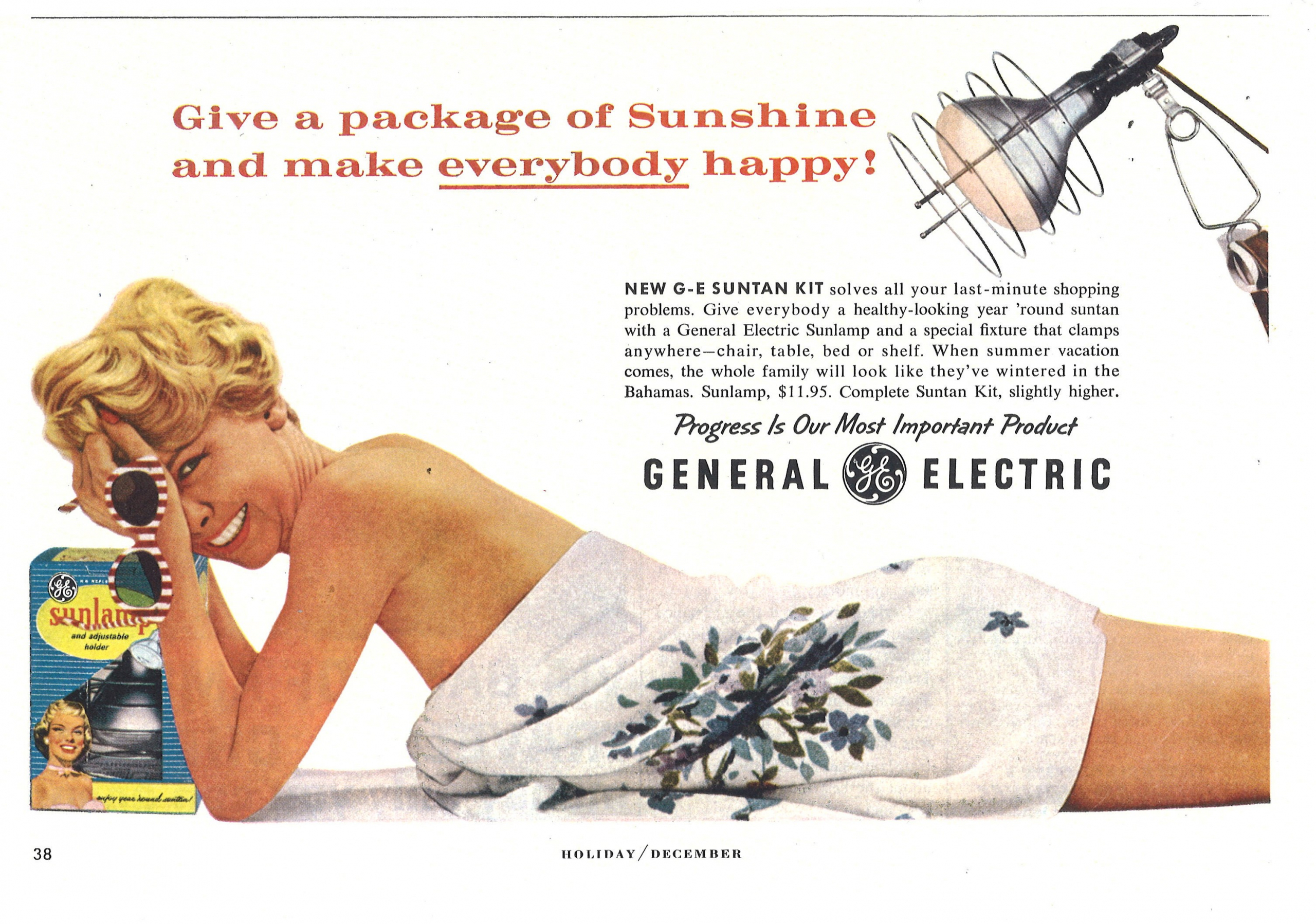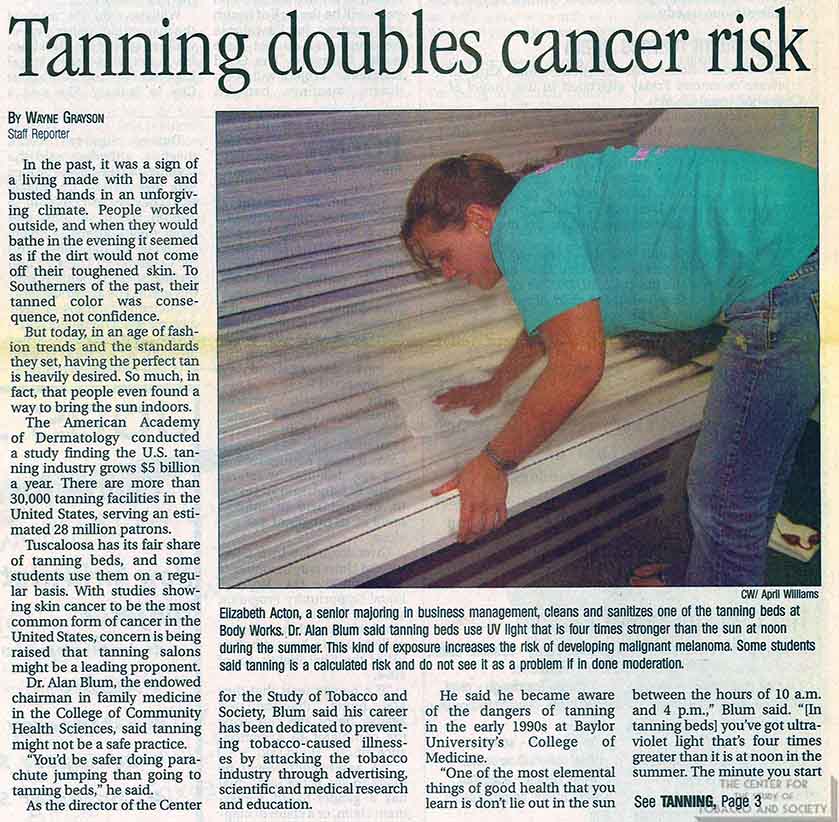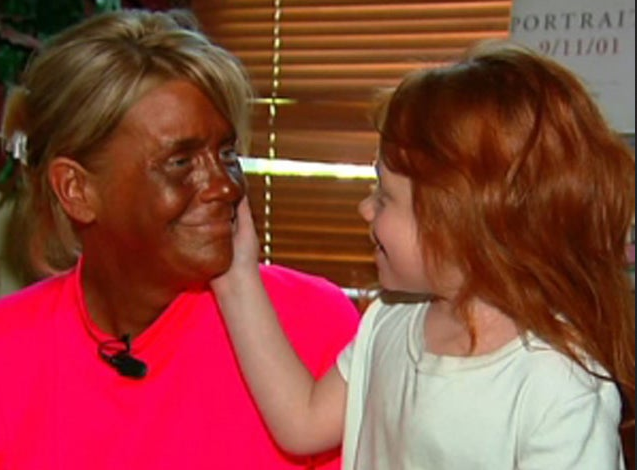The challenge of reducing the rise in melanoma
This exhibition presents a historical overview of the use and promotion of sunlamps and tanning beds. Advertisements for tanning bed salons fail to acknowledge that ultraviolet-emitting tanning devices are classified by the International Agency for Research on Cancer as a Group 1 agent that can cause cancer in humans. Other Group 1 carcinogens include asbestos, formaldehyde, and tobacco smoke. The increase in melanoma, the deadliest form of skin cancer, has paralleled the rise in tanning bed use, not unlike the dramatic rise in lung cancer in the 20th century as cigarette smoking increased. The American Cancer Society (ACS) estimates that 212,000 Americans will have been diagnosed with melanoma in 2025, of which 104,960 cases are invasive and require extensive treatment. 8,430 deaths of Americans from melanoma are projected in 2025. Efforts by the ACS and the American Academy of Dermatology to discourage the use of tanning beds appeared to have succeeded by the 2010s. According to a report in The American Journal of Public Health, Indoor tanning prevalence decreased significantly among all US adults from 10% in 2007 to 4% in 2018. However, as reported by Olivia Luppino in Women’s Health in August 2024, “The tanning bed is one Y2K trend that no one expected to surface again, but over the past few years, Gen Z has increasingly been sharing their love for (and misinformation about) artificial tans in videos online, bringing the controversial technology back to the mainstream.” Of particular concern are the findings of a survey conducted by the American Academy of Dermatology in 2022, in which 38% of Gen Z respondents believed that tanning is safe as long as they don’t burn and 28% felt that getting a tan was more important to them than protecting themselves against skin cancer.















































































